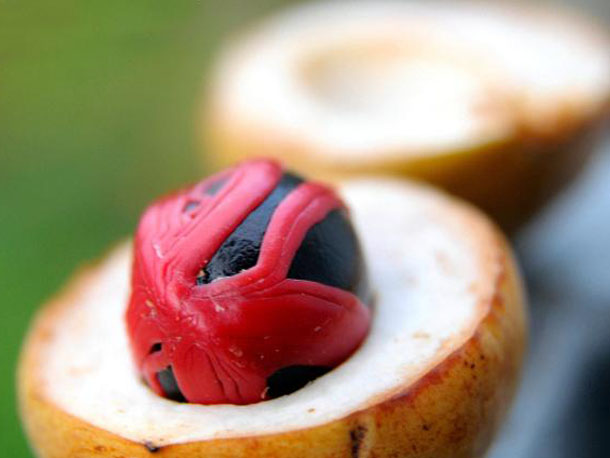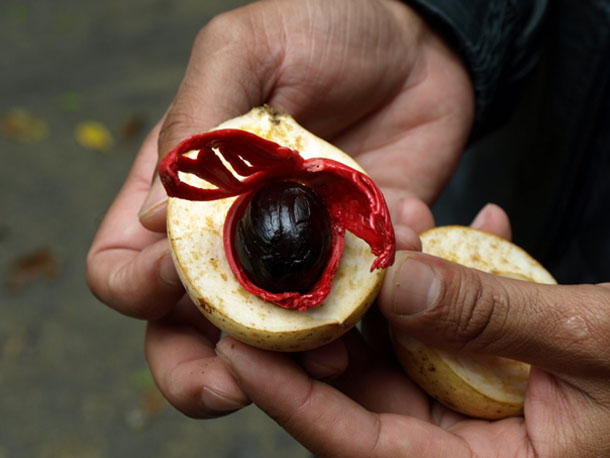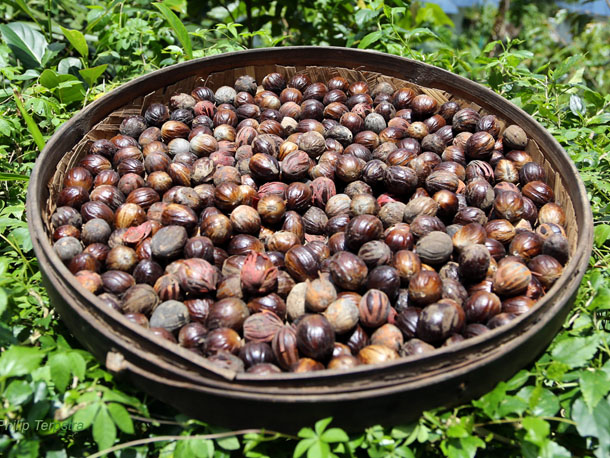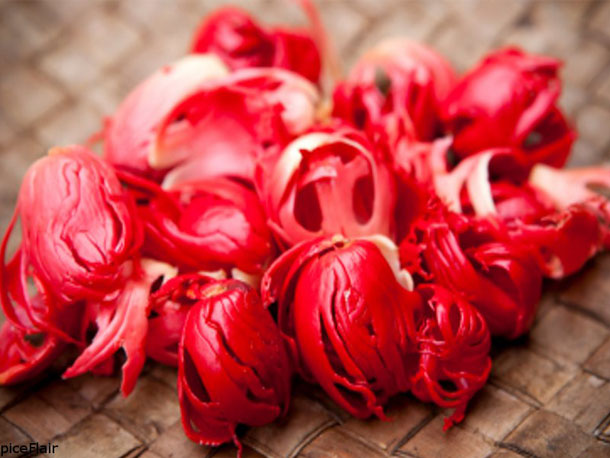Weather spoils mace and nutmeg outlook

International spice traders are bracing themselves for the likelihood of tight global supplies of mace and nutmeg next year as Indonesia is forecast to suffer crop losses as a result of El Niño and Grenada remains a small volume producer these days.
Grenada’s crop was severely damaged by Hurricane Ivan back in 2004 and the island has been unable to recover fully to the quantities it used to produce before this hurricane hit. The problems were compounded by a further hurricane in 2005 – Hurricane Emily.
India produces mace and nutmeg but has its own domestic demand to meet and is a prominent importer of the spice from Indonesia.
Hence, Indonesia is the main global producer. However, Indonesia has already been impacted by El Niño related weather this year and more of the same is anticipated for 2015.
Henk Moerman, managing director of Rotterdam trader Catz International, told “The nutmeg crop in Indonesia will be seriously affected by El Niño. It is almost already confirmed that it is affected by the drought which has been caused probably by El Niño and my sources are anticipating a drop in production which could be as much as 30 to 40%.”
Similarly, Marco Van der Does of AVS Spice Brokers recalled that Indonesia has suffered mostly dry weather since June. Initially, this adversely impacted the quality of white pepper. Mace and nutmeg farmers became concerned and by October they confirmed that they were having problems due to prolonged dry conditions.
The Indonesian government has directed farmers to start picking the nutmegs even though the fruits are not ripe yet.
“They fear that if they keep the fruit on the trees it takes too much energy from the trees and the trees will die,” Van der Does explained.
Quality issues
However, a downside of the move to pick early is that the quality of the nutmeg is likely to suffer. “An unripe fruit that falls off the tree most likely ends up being BWP which is a lower, shrivelled quality. If you are picking unripe fruits they will never become fully grown fruits which can produce sorted qualities, such as ABCD. So we will probably see an increase in BWP production but a very significant decrease in shrivels and ABCD,” Van der Does noted.
BWP stands for broken, wormy, punky.
Moerman explained that prices had already risen by some 15-20% recently. If the decline in output proves to be as severe as expected then further price increases look inevitable, he noted.
Van der Does said that the latest upward price movements were mainly on the higher qualities – i.e. the packing grades, which are not used for grinding, and are in short supply. Since it is still possible to produce some BWP qualities from the unripe fruits these types have not shown significant price gains.
Risk of aflatoxin
However, the BWP qualities have been very difficult to sell to Europe and the US of late, due to the higher risk of aflatoxin, Van der Does warned. “These unripe fruits can have an easier infestation of mould in the kernel. Mould growth can produce aflatoxin and aflatoxin is not something you can wash off. Once it is there it cannot be removed,” he added.
Mace and nutmeg is harvested year round but the peak crop in Indonesia is in March/April with the secondary phase in September/October.
Moerman warned: “People are especially worried about this March crop, because that is the main one and if that is failing then the damage already has been done to the export volume for the entire year.”
Van der Does remarked that even if Indonesia were to receive favourable rainfall over the coming months he could not envisage this as compensating for the existing problems and inevitable shortfall in production ahead of September 2016.
Moreover, the general expectation is for the continuation of adverse weather in Indonesia. The impacts so far have been verified by various reports on coffee harvests in the country, which are showing much lower yields due to the El Niño effect.
Unable to take up the slack
Van der Does warned that Grenada cannot be viewed as able to plug much of the gap from Indonesia. He recalled that since Hurricane Ivan he has not seen Grenada trading bigger volumes during any of the periods when Indonesia has faced production difficulties or delays on shipments. Hence, now Indonesia is suffering a major setback there is no reason to expect this situation to change.
Similarly, Moerman noted that Grenada is hardly an alternative as its volumes remain extremely limited and whatever quantities it does release are taken up quickly by those buyers with a preference for Grenadan mace and nutmeg.
Vigi Hachamoff of JHB International, the Brussels-based marketing agency for the Grenada Co-operative Nutmeg Association, said: “If you look at the last 10 years then we are better than nine years ago, but we are not suddenly having thousands of tonnes.”
Hachamoff noted that the weather in the Caribbean area has been unfavourable over the last few years anyway – irrespective of the additional issue of El Niño impacts.
He observed that global importers are well aware that Grenada is no longer a significant supplier. Hachamoff explained that Grenada is now producing at most 400 tonnes a year. This is about 10-20% of what it used to achieve.
In Grenada, the peak harvesting months are October and March/April.
Fewer producers
Production and storage facilities are back to normal following repairs and rebuilding after Hurricane Ivan in 2004 and Hurricane Emily in 2005, but the numbers of these units is substantially reduced.
One UK spice trader said he tends to stick with sourcing mace and nutmeg from Grenada and nearby St. Vincent, selling small volume orders to spice processors of a modest scale.
St. Vincent’s annual output is thought to be at the very most 100 tonnes.
The UK trader estimated that his company has handled 50 tonnes of St. Vincent nutmeg this year. Typically, St. Vincent generates some sales to Canada and to other Caribbean islands, mainly Trinidad.
“The prices over most of this year have been easing,” the trader recalled. “We’ve been selling mostly nutmegs and there has been very little interest for mace.”
The UK trader explained that as yet he had not seen any price increases but if the situation in Indonesia ends up as bad as feared then it seems likely that prices will move higher. He indicated a current price level of around USD10,000 per tonne c&f main European ports for sound, unsorted nutmeg.
The trader viewed demand as ticking along steadily. “We’ve been doing our normal sales for this time of year,” he said.
Moerman said: “Buyers became significantly more active and started covering nearby as well as mid and long term positions.” The long term coverage includes into the second quarter of 2016, he explained.
Van der Does had more of a mixed experience on the state of demand.
He said that one of the problems is that spice traders are currently preoccupied with tracking developments in the pepper sector so their attention is diverted away from some of the more niche items, such as mace and nutmeg.
AVS Spice Brokers has seen some major players starting to take “counter measures” to the expected shortfall from Indonesia, but this is not yet the general strategy.
With this in mind, the company advises buyers to take a close look at their requirements for mace and nutmeg, not only on the short term, but as far ahead as the next season.
“We cannot predict how much rain will fall next year, but what we can say is that less rain fell already for this year. So that will have its effect, at least until next year’s production,” Van der Does concluded.





